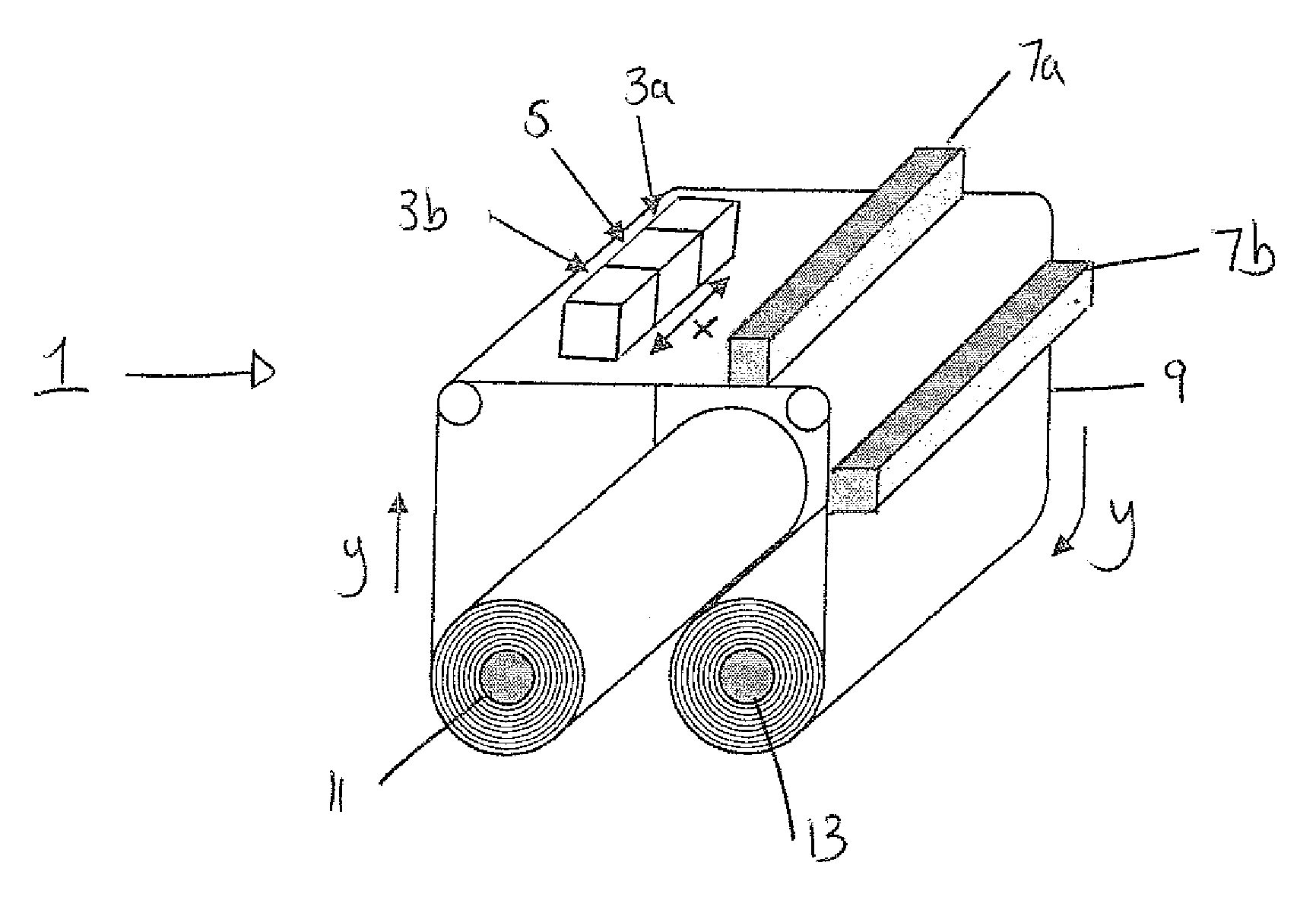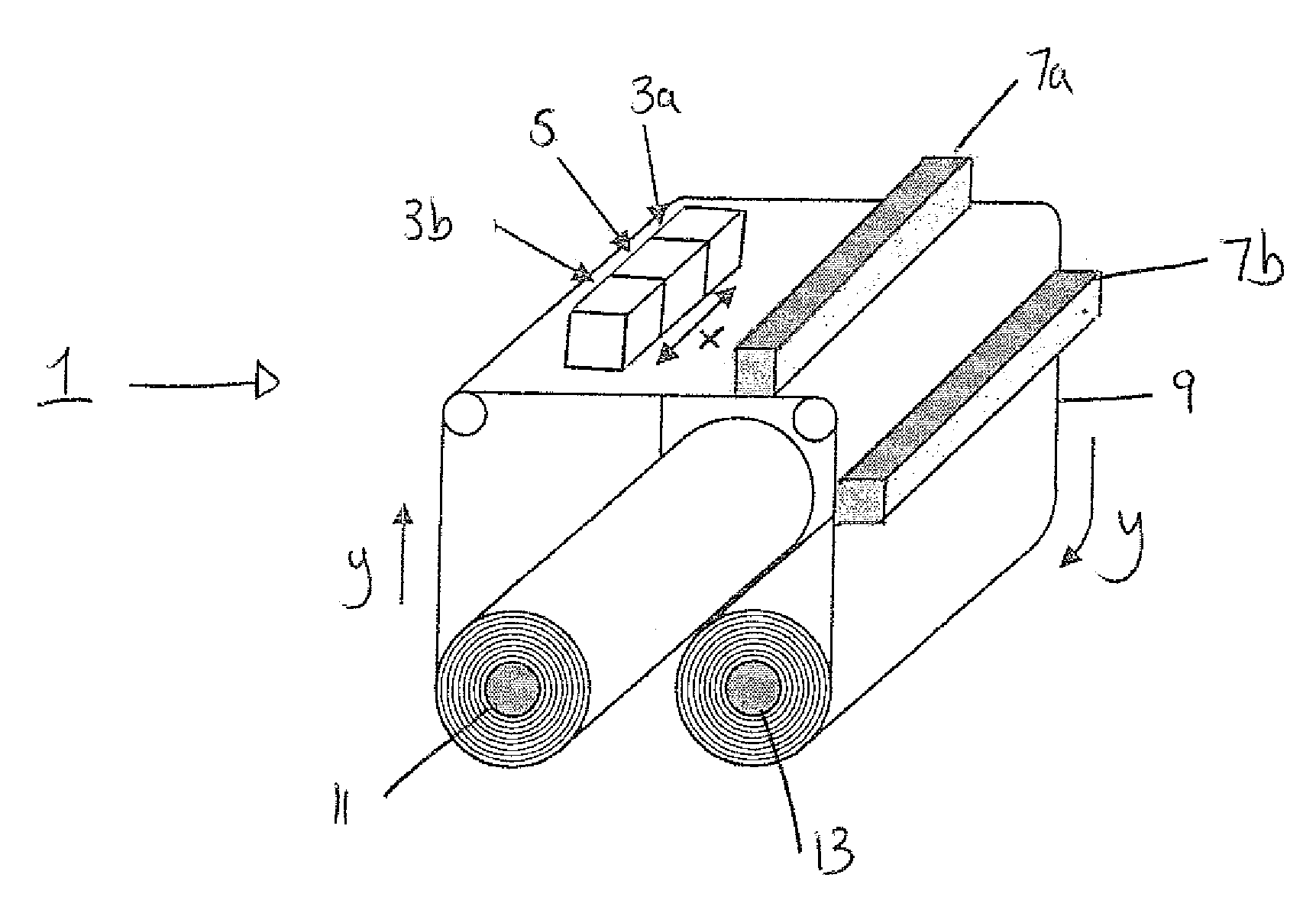Printing method
a printing method and printing technology, applied in the field of printing ink, can solve the problems of the substrate “setting” and the tacky surface of the film, and achieve the effects of good surface cure, good surface cure, and good adhesion to the substra
- Summary
- Abstract
- Description
- Claims
- Application Information
AI Technical Summary
Benefits of technology
Problems solved by technology
Method used
Image
Examples
example 1
[0092]Cyan, yellow, magenta and black ink-jet ink formulations having the following compositions were prepared by mixing the components in the given amounts (percentages are given by weight and are based on the total weight of the ink).
[0093]
TABLE 1ComponentsCyanYellowMagentaBlack2 Phenoxy ethyl acrylate43.9443.0242.4343.6N-vinyl caprolactam24.5923.3426.9924.75Ethoxylated(3) trimethylol propane7.497.216.957.42tracrylateUV stabilizer ST10.30.40.20.3Propoxylated neopentyl glycol4.08.0—3.0diacrylateSartomer CN964 A854.04.0——(urethane acrylate oligomer)Sartomer PRO 20169———6.6(urethane acrylate oligomer)Cyan pigment dispersion8.65———Yellow pigment dispersion—7.0——Magenta pigment dispersion——16.40—Black pigment dispersion———6.3Irgacure 8194.04.04.04.0Irgacure 29592.02.02.02.0Isopropyl thioxanthone1.01.01.02.0Byk 307 (surfactant)0.030.030.030.03
[0094]Evaluation
[0095]The inks were drawn down on to 220 micron gloss PVC substrate using a no. 2 Kbar, depositing a 12 micron wet film. The ink f...
example 2
[0098]Table 3 shows the composition of the black ink provided in Example 1, and a second black ink in which the photoinitiator system has been changed (percentages are given by weight and are based on the total weight of the ink).
[0099]
TABLE 3ComponentsBlack Example 1Black Example 22 Phenoxy ethyl acrylate43.644.6N Vinyl caprolactam24.7524.75Ethoxylated(3) trimethylol7.427.42propane tracrylateUV stabilizer ST10.30.3Propoxylated neopentyl3.03.0glycol acrylateSartomer PRO 201696.66.6Black pigment dispersion6.36.3Irgacure 8194.04.0Irgacure 29592.02.0Isopropyl thioxanthone2.0—Irgacure 369—1.0Byk 3070.030.03
[0100]The inks were drawn down on to 220 micron gloss PVC using a no 2 Kbar (12 micron). The cure was assessed on a conveyorised drier fitted with one 80 W / cm medium pressure mercury lamp. The UV dose required to achieve through cure and surface cure was noted. The degree of surface cure was assessed by pressing the surface of the ink with a finger and through cure was assessed by scr...
PUM
| Property | Measurement | Unit |
|---|---|---|
| wavelength distribution | aaaaa | aaaaa |
| wavelength distribution | aaaaa | aaaaa |
| wavelength distribution | aaaaa | aaaaa |
Abstract
Description
Claims
Application Information
 Login to View More
Login to View More - R&D
- Intellectual Property
- Life Sciences
- Materials
- Tech Scout
- Unparalleled Data Quality
- Higher Quality Content
- 60% Fewer Hallucinations
Browse by: Latest US Patents, China's latest patents, Technical Efficacy Thesaurus, Application Domain, Technology Topic, Popular Technical Reports.
© 2025 PatSnap. All rights reserved.Legal|Privacy policy|Modern Slavery Act Transparency Statement|Sitemap|About US| Contact US: help@patsnap.com


